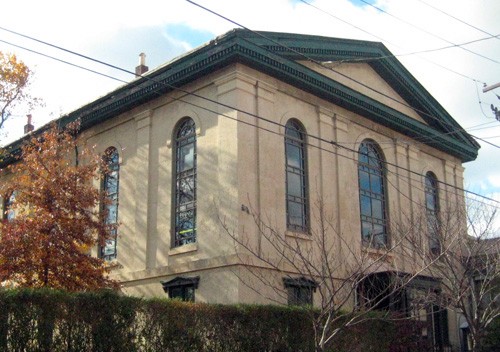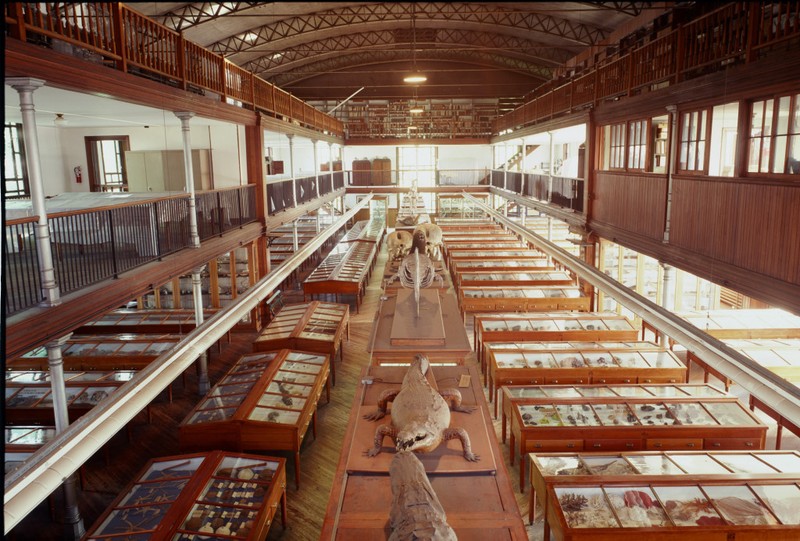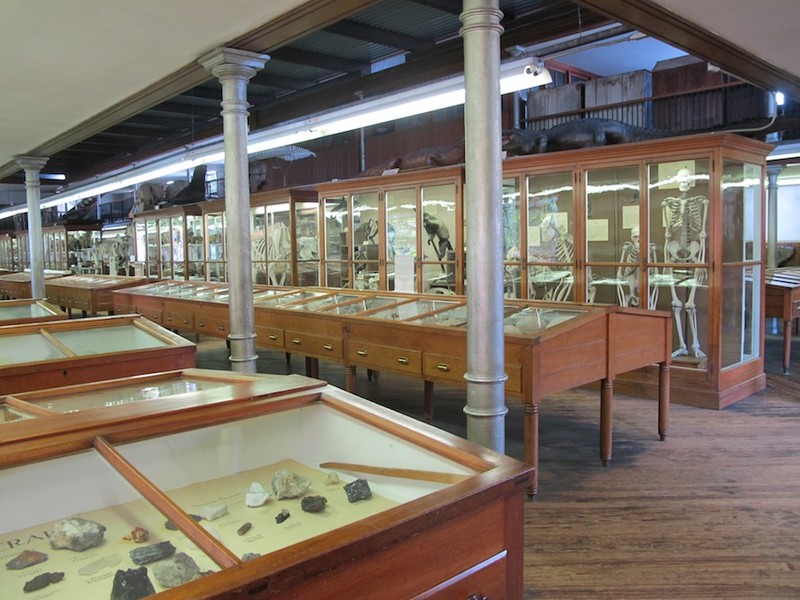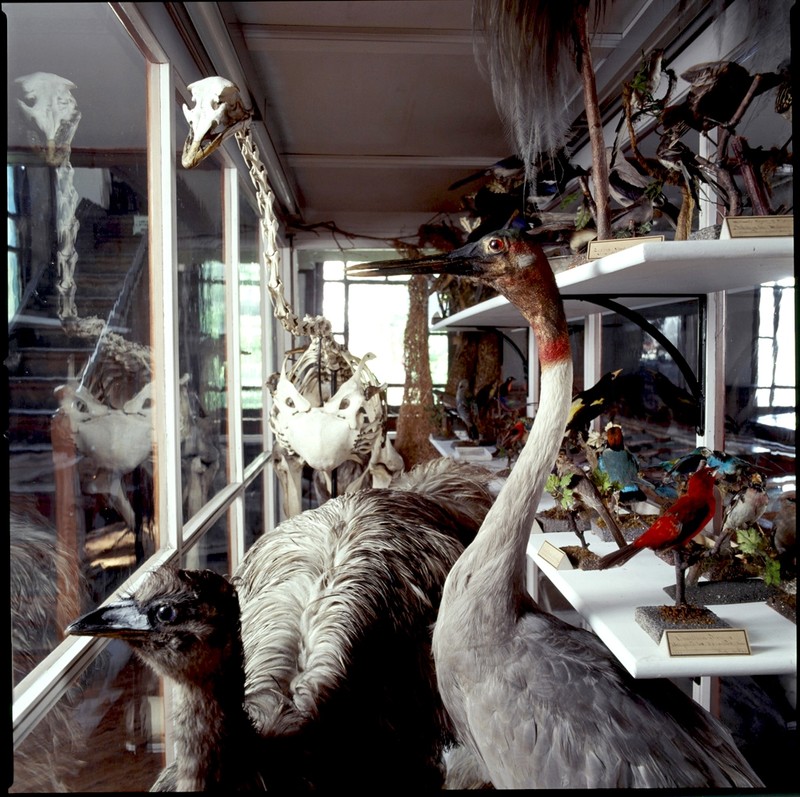Wagner Free Institute of Science of Philadelphia
Introduction
Text-to-speech Audio
Images
The building that houses the Wagner Free Institute of Science was completed in 1865 and designated a National Historic Landmark in 1990.

The second-floor science museum looks largely as it did after it was reorganized by Dr. Joseph Leidy in 1891.

A closer look at the display cases that house most of the museum's specimens, to include numerous mounted skeletons and fossils.

The institute's lecture hall is still used today as is its antique glass lantern which is used to display the library's slide collection.

A behind-the-scenes look at part of the institute's avian collection when not on display.

Backstory and Context
Text-to-speech Audio
Wagner, after travelling and collecting extensively throughout the first half of the 19th century, returned to Philadelphia and began offering free science lectures from his home. Of course, these classes featured many of the specimens he had personally collected. As the class size grew, he moved to a larger, public lecture hall in 1855. He eventually acquired a science faculty to teach classes six evenings per week on architecture, botany, chemistry, and paleontology, among others. The institute eventually raised enough funds to erect their own building to house Wagner’s collection and to conduct their classes. Begun in 1859, the building opened to the public in May of 1865.
When Wagner, who continued collecting and teaching until the end, died in 1885, the institute’s board selected Dr. Joseph Leidy to head its education and scientific programs. Leidy added original scientific research to the institute’s programs and organized various field expeditions. The institute’s research, findings and expedition descriptions were then published in its own publication, The Transactions of the Wagner Free Institute of Science. However, Leidy is best remembered for reorganizing the institute’s extensive specimen collection in a progressive, Darwinian manner from simple to more complex organisms, as well as in geologic time for its fossil and rock and mineral collection. The newly reorganized museum opened in 1891 and still remains, largely, intact, frozen in time.
The three-story museum is now home to thousands of mounted birds, mammals and skeletons. It also features fossils, rocks, minerals, insects, shells, dinosaur bones and the first American saber-toothed tiger discovered, on an institute exhibition, in Florida in 1886. Many of the smaller specimens are displayed in cherry-wood and glass cabinets and feature the original, hand-written curator’s labels.
In 1892, the institute opened the first branch of the Philadelphia Free Public Library and added a new wing in 1901 to house the library, named, appropriately, the Wagner Branch. Its holdings date from the late 17th century to the early 20th and focus on early 19th century English and American works on the history and teaching of science and technology. Also contained within its holdings are over 3,500 glass lantern slides, manuscripts, maps, prints, drawings, and photographs.
Today, the institute still offers the oldest program devoted to free adult education in the United States in the form of college-level science courses. It also presents various lecture series through its Weeknights at the Wagner and Westbrook Free Lectureship programs. Finally, its Science on Tap monthly series offers an informal presentation followed by a seminar-style discussion. Please call or visit their website for class and event schedules.
Cite This Entry
Tinker, Steve. "Wagner Free Institute of Science of Philadelphia." Clio: Your Guide to History. March 11, 2017. Accessed April 27, 2025. https://theclio.com/tour/1366/1
Sources
"The Wagner Free Institute of Science: A Brief History." Wagner Free Institute. Accessed January 2, 2017. http://wagnerfreeinstitute.org/documents/HistoryHandout_000.pdf
"Wagner Free Institute of Science of Philadelphia." Urban Oasis: Temple University and North Philadelphia. Accessed January 2, 2017. http://www.urbanoasis.org/temple/?q=node/14
Dent, Mark. The Wagner Free Institute: inside the nearly hidden science museum right on Temple's doorstep." Billy Penn. October 19, 2015. Accessed January 2, 2017. https://billypenn.com/2015/10/19/the-wagner-free-institute-inside-the-nearly-hidden-science-museum-r...

